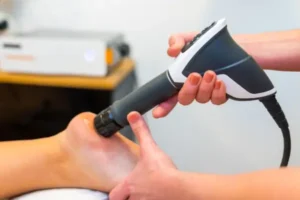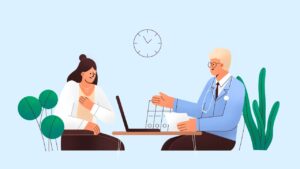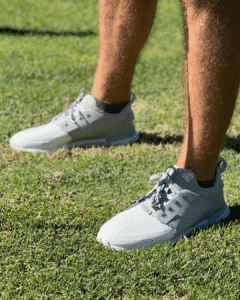As seen in Massage & Myotherapy Australia | Summer 2017 edition.
If you think we’ve said everything there is to say about posture, think again. Braeden Melmer warns about the dangers of the ‘creep’ phenomenon caused by our sedentary lifestyle.
Posture is always a popular topic with manual practitioners. It seems like we have beaten the topic into the ground by now and you may ask ‘what more could we actually talk about?’ All we have to do is ‘stand tall’, ‘sit straight’, ‘check work ergonomics’ and we are good, right? Wrong.
There are still important aspects to posture we need to speak about and we must not overlook how posture translates to more complex movements. Think of a ripple in a still pond and how smooth and symmetrical the ripples will translate across that pond. Now, if we were to add some obstacles throughout the pond such as a large log or rocks those smooth ripples would become disrupted and faded. I think we can compare posture and movement to our ripple in water example. Well-aligned posture is like a still pond, if our joints and bodies are not positioned in an optimal position to transmit forces once we start moving we will absorb and transmit forces in an aberrant manner. Therefore, the ripples or joint forces are not being transmitted smoothly throughout the body.
If we struggle with posture and moving at a basic level, how can we expect to move at a more complex level? We sit all day behind a desk accumulating microdamage because of creep phenomena, and then wonder why we injured ourselves during the 10-kilometre run, weight lifting class or weekend sport. If we don’t start with the basics of good alignment we will not be able to maximise force transmission through our bodies, nor will we maximise muscular recruitment. Thus, we can see how posture becomes an important topic when referring to sports and functional movement.
The average working Australian spends approximately sixty per cent of the week in a sedentary position, which is considered sleeping or sitting: this is not a good start. As previously mentioned, a phenomenon called ‘creep’ starts coming into play causing microdamage to our soft tissues. Think of creep as an overstretched elastic band that will not return to its original state. Now we are unable to load and absorb forces optimally throughout the body and after a prolonged period we start to develop boney structural change.
We are at a stage where it will be very tough to load forces during activity without causing further injury. Imagine the worst posture you can think of, now with a slumped mid-back and forward head tilt, try to lift your arms above your head. You will probably find you can only achieve about fifty per cent if not less of overhead movement, not to mention impingement and pain. Imagine this was your ‘normal’ posture and you are trying to stay active, you can see how we start running into some severe problems. This example emulates Janda’s ‘Upper Cross’ scenarios which we will talk about next.
In this day and age, technology is advancing very quickly. Our ability to stay connected to the world has become easier and literally at the tips of our fingers. Social media being a large player is starting to dominate our lives and we find ourselves attached more and more to our computers, phones, tablets, etc. With a population already spending so much time sedentary we now have more and more obstacles preventing correct posture.
According to the Public Relations Institute of Australia, 13 million Australians are online around 18 hours a day and of that 18 hours it is estimated that approximately two hours is spent on our phones (Daily Mail Australia).
Thus, we start to see more patients presenting with the ‘Upper and Lower Cross’ scenarios. Our upper and lower crossed patients now have significant muscular imbalance, tissue damage and joint restrictions which inhibits their ability to perform activity at any level. Now even basic movement patterns such as walking or running become difficult and exhausting leading into compensatory patterns and eventually tissue failure.
Designed to be upright
The body was never designed to withstand the amount of sitting and sedentary positions that we are incurring today. If we look at the evolution of the body, everything points to a creature that was designed for upright gait and walking for long periods at a time. The purpose of leaving a quadruped gait was to minimise energy loss enhancing our species’ ability to hunt, gather and colonise. How evolution has done this is through our hip sockets and lumbar spine. The hips have moved from a backward-facing position to a lateral one which maximises hip range of motion during upright gait and gluteal activation. The lumbar spine can extend more than our primate ancestors maximising pelvis to knee alignment. These are all beneficial traits to moving bipedal, but when seated, they become quite useless traits and when in positions long enough the body adapts redistributing energy to muscles required more during sitting which, after a while, creates dysfunction when we attempt to walk or run as we were intended to do.
The evolution of bipedal gait is also enhanced with fascial lines throughout the body. The premise behind fascia is to absorb and distribute forces to minimise muscular effort and send biofeedback or proprioception of the body and its movements. These fascial lines also have different roles, some more for posture others more for compounded movements required for sport. All fascial lines influence each other. As poor posture creates muscular dysfunction, as previously discussed, fascial restrictions and limitation start to arise in conjunction. Thus, a fascial line designated more so to posture will influence a line designated for powerful movements such as squatting, lunging or throwing. Therefore, again, we can see posture can create a ripple effect through our body into more complex movements.
These are just a few examples of how posture can influence different aspects of functional movement. We must also ask ourselves what is functional movement? I think functional become subjective to our patients or client’s requirements or needs. Maybe it’s their goal to finish a triathlon or simply to maintain the ability to play with their grandchildren. We must apply these concepts to various scenarios and consider the client’s goals compared to what their function may be. Overall, posture plays a massive role in how we move at a more complex level within sports and, although a popular topic, it should not be overlooked as it can heavily influence how we move functionally.
Get in touch with us here to book your next appointment.
Disclaimer: This post is for general information only and is not a substitute for personalised medical advice. If you’re experiencing recurring or concerning symptoms, especially neurological ones and or severe uncharacteristic headaches, please speak to your GP or seek urgent medical care. Social media isn’t a diagnosis tool, even when it’s run by a qualified health professional.





